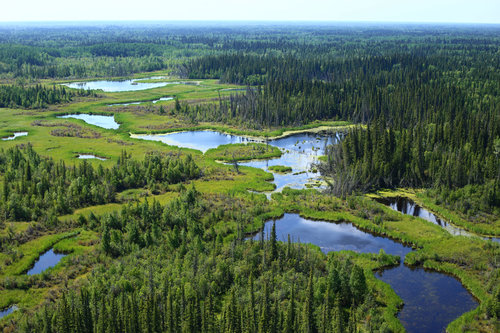The Mormon Metalmark is a small butterfly that is found in two distinct populations in Canada, one in British Columbia and the other in Saskatchewan. They are listed as Special Concern under COSEWIC.
Black-footed Ferret
The Black-footed ferret was announced extirpated from Canada in 1978, then re-examined and confirmed in 2000. Their extirpation is due to the decline of prairie dog populations, their main source of prey.
Burrowing Owl
Burrowing owls are long-legged, round, little owls that hunt during the day and night, and hide-out in underground burrows when they’re not searching for prey. Their ability to live in underground burrows sets them apart from all other species of owls.
Eastern Yellow-bellied Racer
As their name suggests, Eastern Yellow-bellied Racers are the fastest snake in Canada. They are also good climbers that are often spotted basking in shrubs. These snakes are non-venomous and harmless to humans. These snakes are found in Saskatchewan’s grasslands and are listed as threatened.
Greater Short-Horned Lizard
The Greater Short-horned lizard is the most northerly occurring iguanid lizard species in the world, with its northern limits reaching southern Alberta and Saskatchewan. It is the only lizard species found in these provinces.
Mountain Plover
Contrary to what their name suggests, mountain plovers are endemic to the Great Plains of North America and do not inhabit mountain environments or frequent shores like other species of plovers. They are rare in Canada, and listed as endangered under SARA.
Black-tailed Prairie Dog
While they may be regarded as a pest to farmers and grazing managers, Black-tailed Prairie Dogs are a keystone species of the prairies, providing habitat and food for many other grassland animals. They are listed as threatened under COSEWIC and Saskatchewan is the only place they are found within Canada.
Sprague’s Pipit
Sprague’s Pipit is a medium-sized, ground-nesting bird that is rarely seen. It is usually only detected by its unique song, which is often described as a series of descending tinkling, ethereal notes. It is endemic to the prairies and listed as threatened under SARA.
Loggerhead Shrike (Prairie subspecies)
Loggerhead shrikes aren’t your typical songbird. They are fierce predators, and since they don’t have sharp talons to hold prey, they use sharp objects instead, like barbed wire fence and thorns on trees. They are listed as threatened under COSEWIC.
Wetlands
Wetlands perform a multitude of ecosystem functions that are important to both the environment and humans. Flood control, a place for biodiversity, and a canvas for beautiful sunsets are just some of the features that wetlands have to offer, and their positive impact on our ever-changing world speaks for itself. Where would Saskatchewan be without wetlands?










